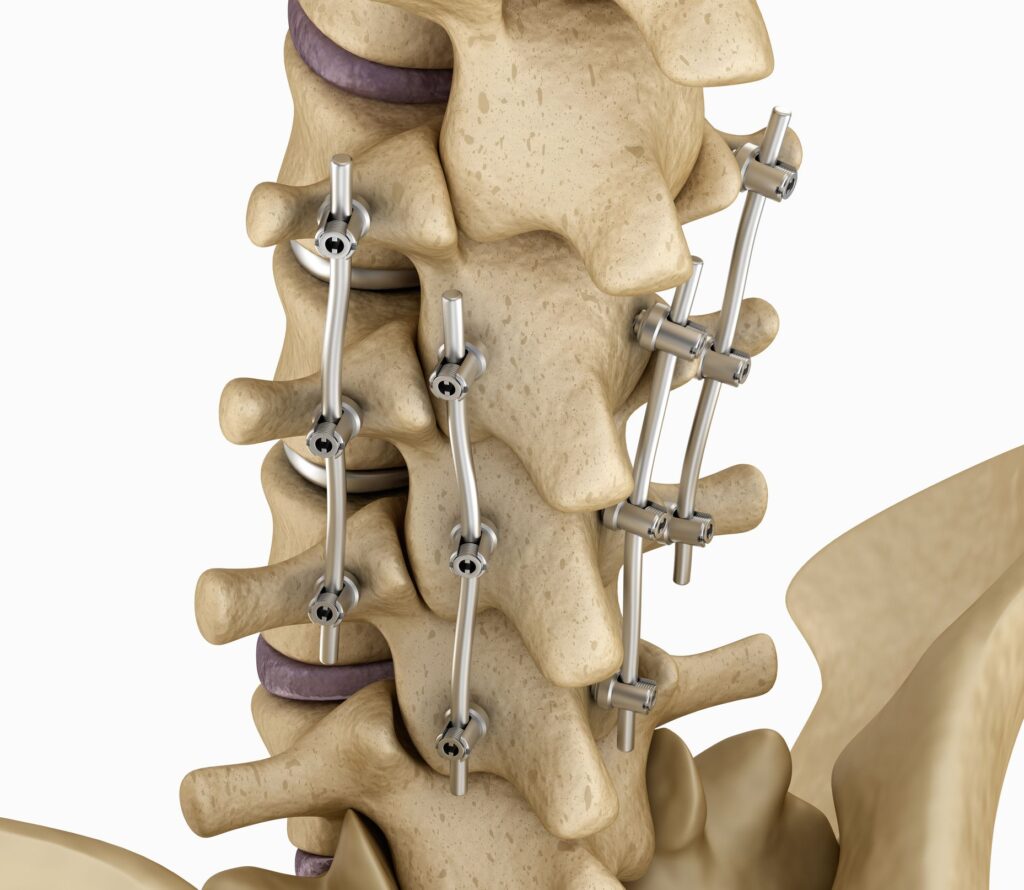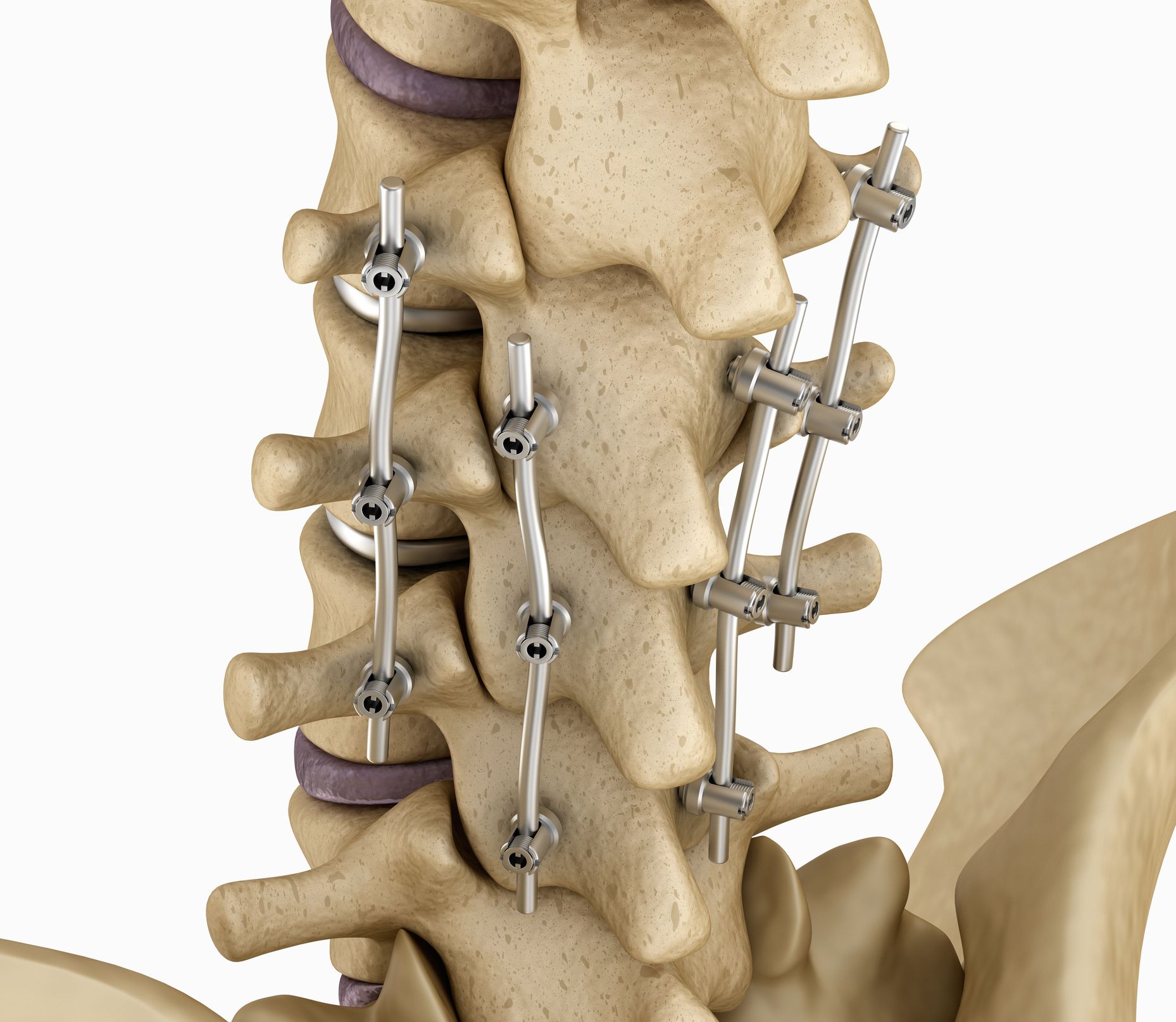
Spinal fusion is a surgical procedure aimed at stabilizing and fusing two or more vertebrae in the spine to alleviate pain and address instability. This involves placing bone graft material between the vertebrae, which eventually fuses to create a single, solid bone. Metal implants, such as rods, screws, or plates, may be used to provide additional support during the fusion process. Spinal fusion is commonly performed to treat conditions like spinal deformities, herniated discs, or instability. While it limits flexibility in the fused segment, spinal fusion can significantly reduce pain and enhance spinal stability, improving overall quality of life.
Symptoms
Spinal fusion is not associated with specific symptoms but is a surgical procedure performed to address symptoms caused by conditions such as spinal deformities, herniated discs, or instability. Common reasons for spinal fusion include persistent back or neck pain, limited mobility, or neurological symptoms related to spinal issues that have not responded to conservative treatments.
Causes
Spinal fusion is not a condition with specific causes but a surgical procedure undertaken to address various spinal issues. It is commonly performed to stabilize the spine and alleviate symptoms resulting from conditions like degenerative disc disease, spinal deformities, herniated discs, or fractures that haven’t responded to non-surgical treatments.
Rehabilitation
Spinal fusion rehabilitation involves a gradual recovery process post-surgery. Physical therapy focuses on strengthening surrounding muscles, improving flexibility, and promoting optimal posture. Initially, mobility may be restricted, and patients are advised to avoid certain activities. Rehabilitation aims to enhance spinal stability, reduce pain, and optimize overall functionality after spinal fusion surgery.
Spinal Fusion F&Q
Spinal fusion is a surgical procedure that stabilizes and fuses two or more vertebrae to address conditions like spinal deformities, herniated discs, or instability.
Persistent back or neck pain, limited mobility, or neurological symptoms resulting from spinal issues that haven’t responded to conservative treatments.
Spinal fusion is not a condition with specific causes but a surgical intervention undertaken to address various spinal issues.
Rehabilitation includes physical therapy to strengthen muscles, improve flexibility, and promote optimal posture. Initially, mobility may be restricted, gradually increasing to enhance spinal stability and reduce pain.
Spinal fusion limits flexibility in the fused segment, as the goal is to create a stable, solid bone structure to alleviate pain and enhance overall spinal stability.
Spinal fusion may be recommended for conditions like degenerative disc disease, spinal deformities, herniated discs, or fractures that haven’t responded to non-surgical interventions.











